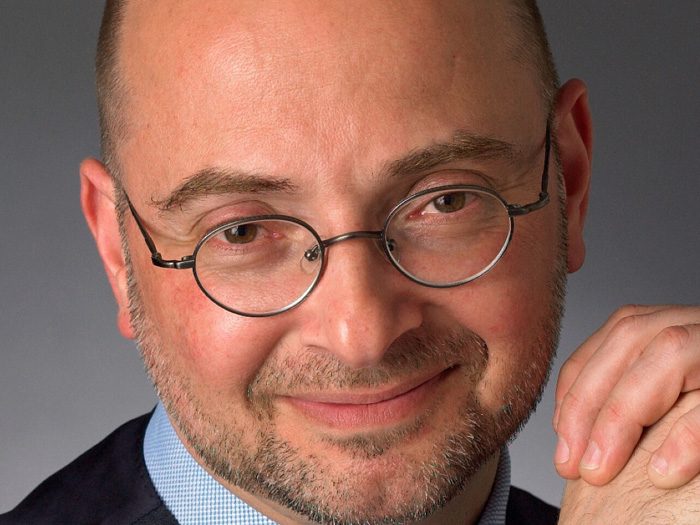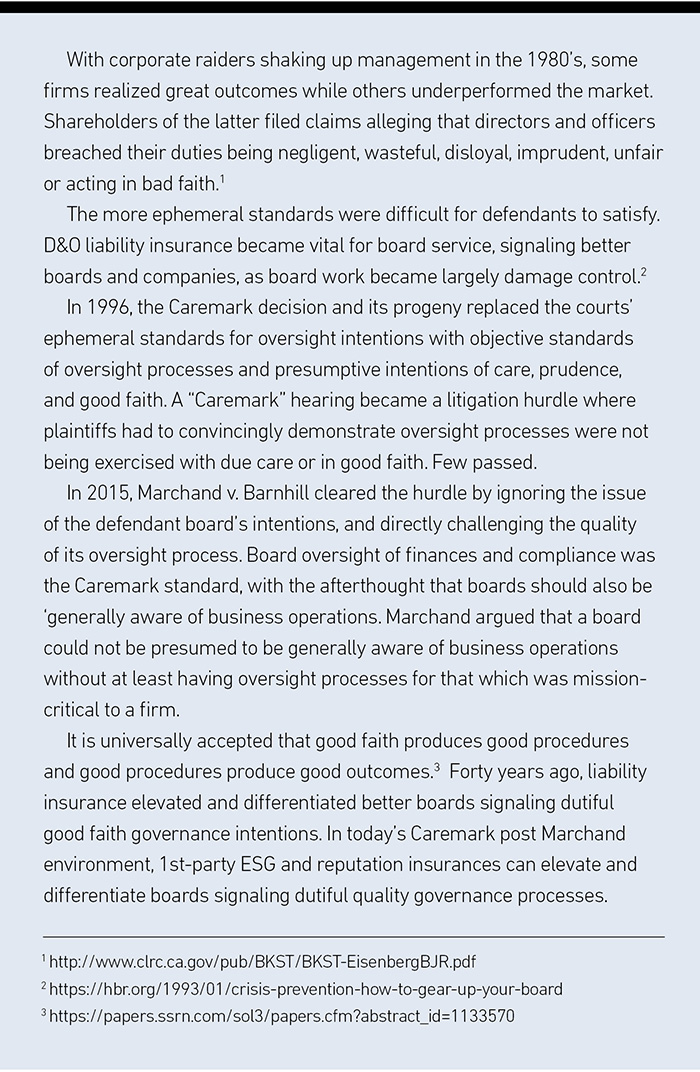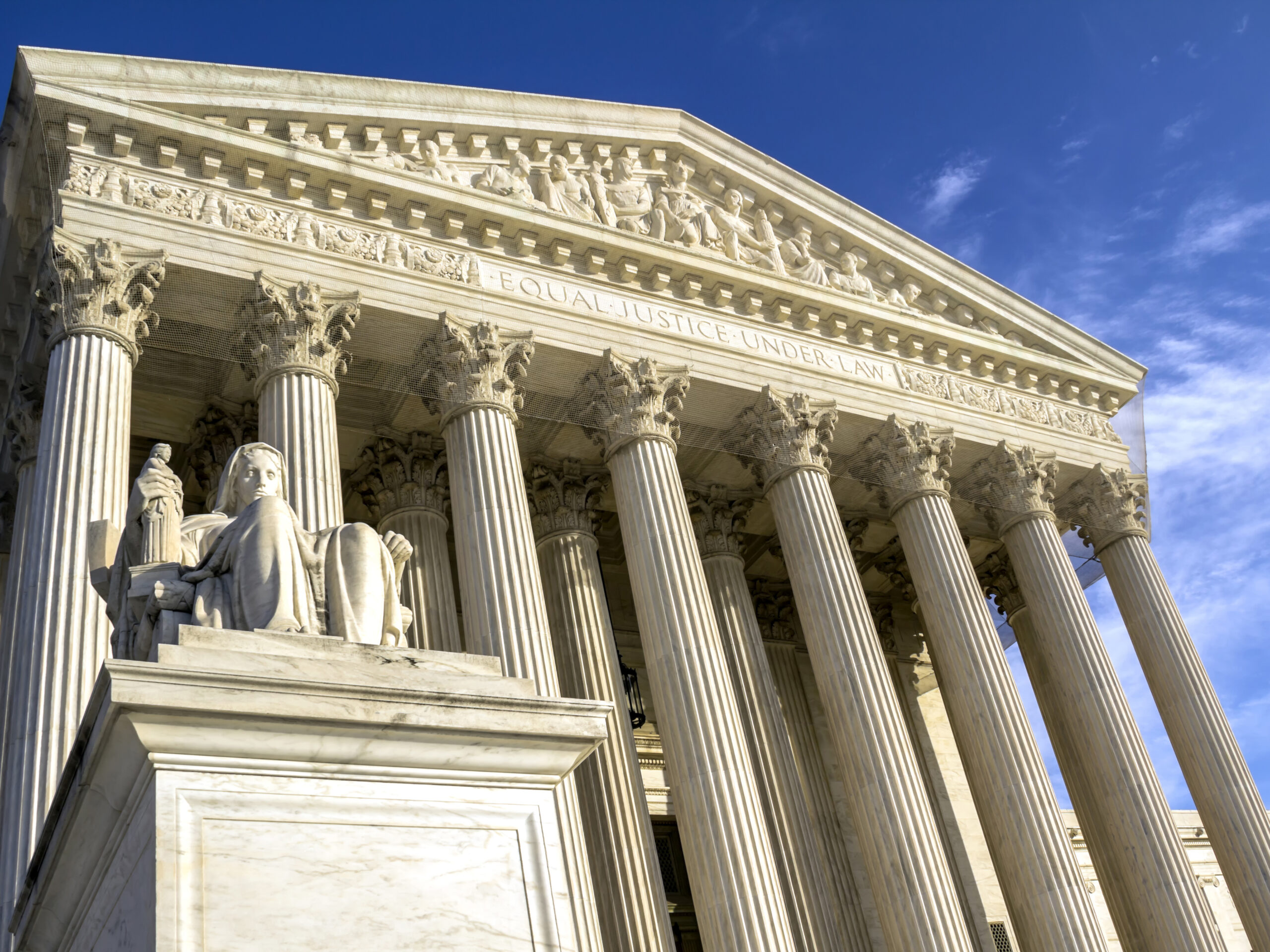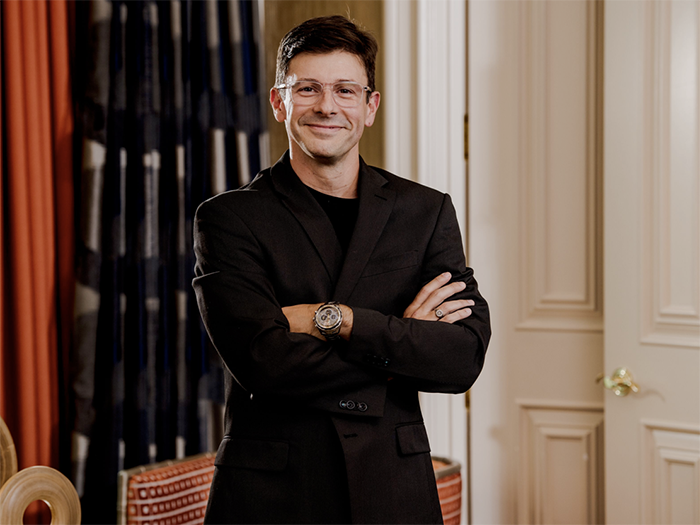12 Questions for Steel City Re’s Nir Kossovsky, Part One

Twenty-two years ago, Nir Kossovsky co-founded Steel City Re, a managing general agent that specializes in underwriting reputational risk.
Risk & Insurance®, caught up with Dr. Kossovsky to talk about recent fluctuations in equities markets and what risk exposures that could create for boards and executives.
The following is part one of that conversation, edited for length and clarity.
Risk & Insurance: Thanks for meeting with us, Nir. We’ve seen drops of 20% or more in the Dow and the S&P 500 this year. What might that mean in terms of securities litigation?
Nir Kossovsky: If one looks back at the year 2017, where I found some pretty good data, 2017 was a great year for the market; it rose 20%. It’s a good reference year, because generally, companies did not lose value. The litigation at that time associated with stock price drop was relative or net of market.
So, normalized to the market stock price drop, which means that even the big stuff, 20% drop in a market that rises 20% means that effectively investors didn’t lose anything, but they just didn’t gain. That gives you a perspective.
This is a market where people are happy, which means that litigation is not being driven by unhappy shareholders as much as it’s being driven with litigation being a profession. It’s a business. So, to what extent does the market provide a business opportunity for the professional litigators who monetize stock price drops? And that is through two channels.
One is the securities litigation class action under federal securities law, which usually involves some misrepresentation or disclosure problem, allegedly.
Then there’s the derivative litigation, which alleges some directorial failure of a duty. Two different strategies. One is messier. The class is messier. You have to build a class. There’s a lot of work associated with it. The derivative litigation is clean. You just need a plaintiff.
But historically, at least since the Caremark decision [Fig. 1 below], it’s been very tough to pursue a case and argue anything beyond a business judgment, which eventually results in the quick dismissal of the case under the business judgment rule.
Going back to 2017. At that time, companies that lost about 13% of their market cap, again, normalized, could count on about a 10% litigation rate, which is not insignificant.

Fig. 1: Caremark Decision
Companies that lost on the order of 20% could count on a 40% litigation rate. So, why did the other nine out of 10 get off scot-free or why did the six out of ten in the other example?
The answer, I think, can be the litigators concluded that there was a better business opportunity with the ones they attacked and let go the ones that didn’t because both forms of litigation required investment by the plaintiffs’ side. For them, it’s a simple business decision. Is the risk of the investment in the litigation worth the potential return?
It’s got to be a big enough company, big enough loss of value to make it interesting. And when you get to the bigger companies and the bigger losses, it’s just a much better value proposition or high return on investment. That’s the business of litigation.
So, if you look at it, not as a stock price drop, but you look at it from the litigator’s perspective, what’s the business opportunity?
The answer has to be: A case has to be built with three things. For class action securities litigation, they have to show there’s been a loss of value. And that there’s been some misrepresentation, some failure, some breach of securities law. That is the basis for that loss and therefore you have the basis for a claim. That can translate to, if you will, the more commonly used term in class action litigation.
A term we’re seeing a lot of which is called the liar’s discount. The more often a company fails to do something it promised, or didn’t somehow fulfill something implied in its securities disclosures, the more likely one will find in the complaint that the firm has now lost value and is subject to a liar’s discount.
It’s not a very elegant term, but it tells you everything right there, which means that there has to be something that was said, or not said, that was material in terms of the company’s expected performance. And that failure to disclose or a misrepresentation disclosure led to its liar’s discount.
In that context, I’ll share that we’ve looked at how often the term reputational damage appears in class action suits. The Agenda Week, one of the Financial Time service newsletters, did a study that showed that by July 2018 and the trailing 12 months, six cases were filed on a class action basis, alleging reputational damage due to liar’s discount. A year later, another 25 cases were filed.
The next year, meaning ending July 2020, we’re up to 36. That’s another 60% jump alleging damage to the firm’s reputation owing to some misrepresentation or failure to disclose something in classic class action litigation. We’ll set aside the COVID years, because everything was a zoo. I don’t think you can use any data from that window to be meaningful or to trend.
So, we have 6, 25, 39. And the important thing is that the allegations are a misrepresentation or some other form of reputational damage leading to a liar’s discount.
Let me tie that into ESG.
Many, many firms have made certain ESG promises. There is an excellent series of studies by Lucian Bebchuk of Harvard, who runs the Governance Center, who’s been tracking this and publishing peer-reviewed papers that essentially show companies have used ESG promises and promotions as a marketing tool, and that very little substance has been effected as a result of those promises: no changes in governance, no changes in documents, no changes in systems.
There’s no evidence of anything being done beyond the publicity aspect of it. I’m not saying publicity’s bad, but alone, it’s fluff.
The courts have ruled that it’s still effectively material or could be material and therefore reasonably treated as such. I think there’s a very famous case of Signet Jewelers, where they promised all sorts of things, where we have a socially just environment that promotes equality among the genders, never mind the sexual harassment claims that we’re now facing.
And the investors said, “But wait, you said you have all these great social programs and yet here you have all these sexual harassment issues. You misrepresented your programs.” And Signet took a defense with, “Well, that was in our marketing literature. Surely no one believes marketing literature.”
Once upon a time, one of the Trump lawyers, Sydney Powell, argued no one in their right mind would believe her claims that the Dominion Voting Systems were fraudulent. Nobody would have believed that was her defense, which was pretty good. They took that defense. It’s called the puffery defense.
Historically, that worked as well, but in this instance the court said that the promotion was done with respect to content that really was directed towards the investment community; that’s SEC stuff. Therefore, it’s more material than other types of marketing stuff, which can be set aside as puffery and excused. This, the courts deemed were material and as a result, Signet wrote a $270 million check and settled the matter.
Now we turn to ESG and say, well, what’s the incidence of this puffery or promotion without substance? According to Lucian Bebchuk, whose said that of the 200 companies in the Business Roundtable, ESG went in three years from an interesting thing to the thing, it being mentioned by the Roundtable for the first time in 2019.
A Financial Times recap summarized that the terms ESG appeared in earnings calls less than 1% of the time until that Business Roundtable announcement in 2019. And from there on 20% of the calls included that term. So, that was a huge step right there.
So, Bebchuk asked the 200 companies, how many of them that have made this pronouncements that their shareholder interests are equal to the other stakeholder interests, how many of yhem signed onto this pledge?
Again, nearly 200 companies signed on. Of the 50 companies that responded to a survey, one company said they informed the board after the fact. The other 49 said they’ve never bothered informing the board.
That was the first round suggesting that what’s came out of the marketing department could be blindsiding the governance department. So, circling back now to the initial concept from class action litigation, allegation of value loss, and allegation of some sort of misrepresentation and a liar’s discount and that those terms actually are increasingly frequent in the complaints.
I think litigation is going to be much more aggressive now.
R&I: Let’s look at derivative litigation, which essentially died with Caremark. I mean that the bar was exceedingly high.
NK: Litigators had to prove that the board knowingly didn’t do something, that it represented a fundamental failure in the areas of oversight of compliance or in some misrepresentation of finance. And the other leg of Caremark is then being generally aware of the operations of the firm. It was very hard to build a case.
If it passed the Caremark bar, companies settled. Because at that point, there was clearly something there and nobody wanted to go any further, but Caremark was a fabulous barrier, and it worked very effectively from 1998, till about 2016-17. That’s when the first crack appeared.
That was in the case involving Blue Bell Ice Cream — Marchand v. Barnhill is the legal title. The case stemmed from an ice cream manufacturer that distributed in 27 states from a little town in Texas. Listeria contaminated the ice cream. A few people died.
The market basically feared the ice cream and its safety going forward. They couldn’t sell ice cream. They went into cash flow problems. They had to borrow under unfriendly terms, which resulted in heavy dilution to the equity holders.
You had derivative litigation, class action litigation, criminal litigation against the CEO for hiding data about the safety of the product. Everything that could go wrong bubbled out from this particular case, but the core allegation in the derivative litigation was that there was no safety committee on the board.
The initial Delaware court said, “You don’t have to have a safety committee on the board.” The board knew they’re making ice cream and that Caremark just requires that you’re generally aware of the operations of the firm.
The plaintiffs argued that if you’re making ice cream, you have to know that you’re making it safely. If you’re not making safe ice cream, you’re not making ice cream, you’re making poison.
That was the argument. The Supreme Court of Delaware said it couldn’t adjudicate the case, but it seems reasonable. So, let us allow that to pass through Caremark and let the jury decide.
Thus, on the basis of the absence of a safety committee on the board, overseeing what has been termed since then, something that is “mission critical” to the firm. If the board isn’t overseeing that which is mission critical, then the board is failing in its duty of oversight.
That’s how Caremark is being breached. Since then, there were multiple cases evolving failure to oversee the quality of research in a pharmaceutical company that failed to do good R&D work. Failure to oversee environmental sustainability in a company that ran steel pipes with oil and had a leak. What’s mission critical when you have oil and it’s a steel pipe? Answer: It stays in the steel pipe.
The case against Boeing Aerospace was identical to the Blue Bell Ice cream case.
The board did not have a safety committee. If you’re flying and you’re providing airframes, safety is mission critical to the product. In fact, it was built into the Boeing brand.
The old pilot slogan used to be, “If it ain’t Boeing, I ain’t going,” because safety was, was understood to be implicit in the firm’s business. And arguably, the board said, “We build safe aircraft, we’re engineers. That’s what we do.”
The plaintiffs, and this is key, argued that the firm did not pay the attention required under current standards to safety, for there was no safety committee on the board. Therefore, the board could not have been overseeing that which is mission critical, because there’s no evidence they were. And evidence to the contrary is the fact that two 737 Max aircraft fell out of the sky.
Boeing settled that case in under 30 days. I think they realized they had no case. If ice cream, which killed three people, had that consequence, how much more so for two aircraft?
R&I: How much more mission critical is it?
NK: Go back to the 2010 annual report of Rolls Royce, which makes what they call “mission critical power systems.” That’s how they describe it engines. In its annual report in 2010, it said the board has the risk committee.
And the purpose of the board’s risk committee is to protect the reputation of the firm, number one. Number two, protect the viability of the firm. And protect the profitability of the firm, as number three.
That language is interesting, because it follows, in many ways, the same logic of the credo of Johnson & Johnson that was cited back in the 1980s when it had the Tylenol crisis. J&J’s credo said the same thing. “We make safe products for doctors and nurses and patients. And if everything’s done right, after about 200 words, then we’ll make money.”
So, you have a standard that was established, which made it very easy to compare one to the other. I think that the Boeing attorneys wisely recognized that under the current environment where Caremark has been reinterpreted post-Marchand and mission criticality must be overseen by a board.
If one cannot demonstrate that there is a system or a mechanism to oversee that, which is mission critical at the board level, and arguably it’s senior management level, there isn’t an enterprise-wide system overseeing that which is mission critical.
There is a vulnerability to derivative litigation.
So, I expect that to uptick too, because Caremark’s been breached. And it’s a lot easier to run a derivative case than a class case.
There’s one other thing that also makes Caremark more vulnerable. And that is what’s called a Section 220 regulation. It refers to the ability of plaintiffs to acquire information about a company. It used to be really hard to actually get what’s going on. You’d get financial books, but that’s about all you could get.
The courts have been more liberal in interpreting Section 220, so you can get memos and emails and a lot of things beyond just the corporate records of the board meetings.
R&I: Which increases the cost of discovery.
NK: Right. Cost of discovery is up, but at the same time, the ability to find a smoking gun is a lot easier. All you need is someone to write an email to somebody else saying, “huh, we fooled them.”
Between the Section 220 changes, the shift in Caremark post-Marchand and reinterpreting that which is mission critical, I think derivative litigation is now a big issue. And ESG, again, is a fabulous thing, because so many companies have said ESG is mission critical to operations.
How many proxies have come out this year that’s item number one, we’re all about ESG?
R&I: LinkedIn is just chock-full of it.
NK: Right. Companies have gone a whole hog on it. There’s been air breaks applied over it at BlackRock and some of the other promoters because under certain conditions, it’s terrific. And when you have war in the Ukraine and oil is expensive and Russia makes money off of oil, maybe drilling is a nice thing. And maybe it’s a socially reasonable thing to do.
R&I: Germany’s going back to coal.
NK: There we go. So, ESG is fluid. &
Nir Kossovsky continues his discussion in part two, available here.










